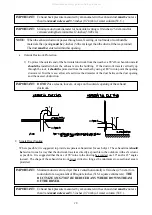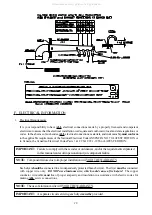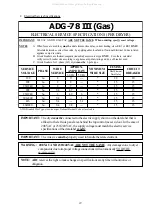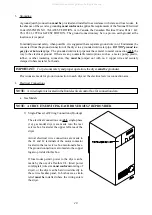
5
7. A program
should be
established for the inspection and cleaning of lint in the burner area, exhaust ductwork,
and area around the back of the dryer. The frequency of inspection and cleaning can best be determined
from experience at each location.
WARNING:
The collection of lint in the burner area and exhaust ductwork can create a potential fire
hazard.
8. For personal safety, the dryer
must be
electrically grounded in accordance with local codes and/or the
National Electrical Code ANSI/NFPA NO. 70-LATEST EDITION, or in Canada, the Canadian Electrical
Codes Parts 1 & 2 CSA C22.1-1990 or LATEST EDITION.
NOTE:
Failure to do so will VOID THE WARRANTY.
9.
UNDER
NO
CIRCUMSTANCES
should the dryer door switches, lint door switch, or heat safety circuit
ever be disabled.
WARNING: PERSONAL INJURY OR FIRE COULD RESULT
.
10. This dryer is not to be used in the presence of dry cleaning solvents or fumes.
11. Remove articles from the dryer as soon as the drying cycle has been completed.
WARNING:
Articles left in the dryer after the drying and cooling cycles have been completed can
create a fire hazard.
12.
READ AND FOLLOW ALL CAUTION AND DIRECTION LABELS ATTACHED TO THE
DRYER
.
13. For safety, proper operation, and optimum performance, the dryer
must not be
operated with a load less
than sixty-six percent (66%), 50 lbs (22 kg) of its rated capacity.
WARNING: YOU MUST DISCONNECT AND LOCKOUT THE ELECTRIC SUPPLY AND
THE GAS SUPPLY BEFORE ANY COVERS OR GUARDS ARE REMOVED
FROM THE MACHINE TO ALLOW ACCESS FOR CLEANING,
ADJUSTING, INSTALLATION, OR TESTING OF ANY EQUIPMENT PER
OSHA
(Occupational Safety and Health Administration)
STANDARDS
.
All manuals and user guides at all-guides.com










































